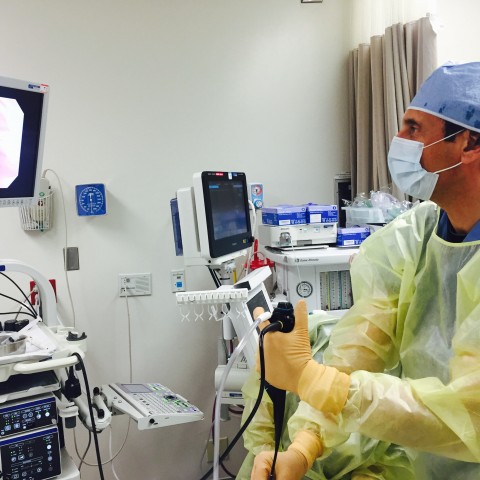Bronchoscopy
Bronchoscopy is a procedure that allows your doctor to look at your airway through a thin, flexible instrument called a bronchoscope. This ultrasound device will be guided through the patient’s mouth and trachea. During a bronchoscopy, your doctor will examine your throat, larynx, trachea, and lower airways.
Bronchoscopy may be done to diagnose problems with the airway, the lungs, or with the lymph nodes in the chest, or to treat problems such as an object or growth in the airway.
Endobronchial Ultrasound (EBUS)
We use endobronchial ultrasound (EBUS) to diagnose and stage lung cancer, and to determine if the disease has spread to other parts of the body, such as the lymph nodes.
This outpatient procedure under local anesthesia allows us to obtain real-time images in and around the lungs and to identify difficult-to-reach tumors. The EBUS can be used to biopsy a tissue or fluid sample from the lungs and surrounding lymph nodes of the chest.
EBUS is a less invasive alternative to conventional mediastinoscopy, a surgical procedure requiring a series of incisions in the chest under general anesthesia.

